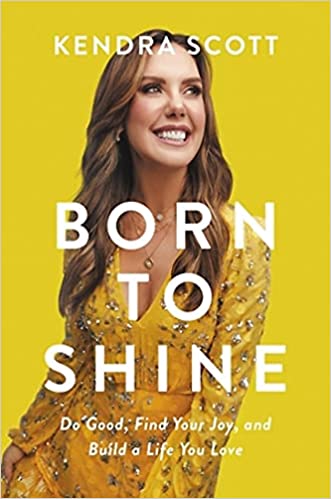
Welcome to our podcast, Who What Wear With Hillary Kerr. Think of it as your direct line to the designers, stylists, beauty experts, editors, and tastemakers who are shaping the fashion-and-beauty world. Subscribe to Who What Wear With Hillary Kerr on Apple Podcasts and Spotify.
If you were scrolling on TikTok this summer (or even last year for that matter), then you were probably served at least one video on your For You Page featuring a college-aged woman preparing for sorority rush. In the video, she looks directly at the camera as she takes the viewer through her "OOTD." One of the most popular brands that came up in these videos was none other than Kendra Scott.
Scott founded her eponymous label in 2002 with $500 and a tea box full of her jewelry that she brought door-to-door to local Austin, Texas, boutiques. Now, 20 years—and a billion-dollar business—later, Scott is adding another line to her already stacked résumé: published author.
In the latest episode of Who What Wear With Hillary Kerr, Scott talks about her latest project, Born to Shine: Do Good, Find Your Joy, and Build a Life You Love, a autobiography that includes stories of how she launched Kendra Scott, what it means to have a "Shake the snow globe" moment, and why her first failed business was a blessing in disguise.
For some excerpts of their conversation, and to shop the book, scroll below.

This book, Born to Shine, is amazing, but it's also not what I expected. You are a relatively private person and you really went there. I thought it was remarkable that you shared so much of your story. What made you want to go there as a whole and to plant your flag in the ground to share all the edges of your truth? It feels radical in the best possible way.
It was 2019. I left Colorado on New Year's Eve and flew to Kenosha, Wisconsin—where I'm from—and picked up my father—who had had his second major heart attack—flew him to Austin, Texas, where I live, with an ambulance waiting, where he then stayed until March 12.
That's how my 2020 started not even knowing in a few months all the craziness that was about to happen. I write in my book about the "Shake the snow globe" moments in our life. That was a "Shake the snow globe" moment. So many things were happening fast, and so many difficult things were happening fast for me.
From my father to my business having to close all of my stores to having to completely pivot and shift my business. I was going through a divorce. I personally had some health issues, and I ended up in the same hospital that my father was in.
During that time, I was journaling a lot, and I was looking at life through a different lens and seeing Instagram and seeing articles being written about me that were all positive and like, "She's on top of the world." Inside, I was absolutely destroyed and just having a really tough time.
I felt like this was the time to share that and to be vulnerable. To show that there's power in vulnerability.

Through all of those valleys that have happened in your life, what are some of your biggest learnings from those otherwise terrifying or difficult situations?
I like to talk a lot about failing forward because every single one of those moments—whether it's been a failure of my first business—if I hadn't had those five years of that failed little hat business that I had when I first started out at 19 years old, I wouldn't be sitting here talking to you today about the business I have today.
I needed that experience. I needed to learn the things I did right but, more importantly, all the things I did wrong, so that when I set up my next thing—my bigger thing—it was going to work.
When those "Shake the snow globe" moments happen—and they are going to happen—that if you can just try to see beyond it a little bit, see through that blizzard, the sun's gonna shine, and it's gonna shine brighter than it ever has, especially if you can look in those moments and go, "Gosh, that's why."

I'm curious about your business plan specifically around how, in the early days, folks said, "Well, you have to be in New York." "Well, you have to be in L.A." You said, "No, I'm gonna do it my way, and I'm going to focus it in a different way, and I'm going to think about things in a different way." What made you hit on that strategy?
Being in Austin was part of the DNA of my brand. The style, the aesthetic, the music, the culture, which, so many people back 20 years ago didn't know Austin. Now people are like, "It's the buzz," right?
It really had this amazing vibe, and it was part of the design process for me. I would be influenced by all the great things happening in my city. Editors and others would say, "Well, you're not going to have a legitimate fashion business if you're not on one of the coasts." I just was like, "No."
Then they'd see my collection. They'd be like, "This is so refreshing and amazing, and I love the color, andI love how you're utilizing all these new shapes and cuts and different things."
You walk into the Kendra Scott booth, and we're doing our own thing. So sticking to that and being proud of where I was from. I wasn't going to let that stop me.

This interview has been edited and condensed for clarity. Next up, check out our previous episode featuring Emma Roberts.
from Who What Wear https://ift.tt/ojbT4gF



0 Comments